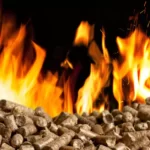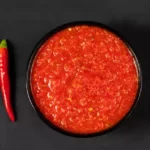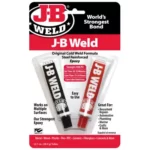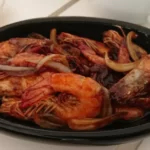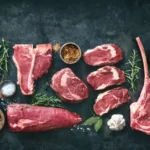Cooking a perfect brisket is an art that blends time-honored techniques and personal preference. The process is filled with culinary nuances that dictate the outcome, with one of them being the rub application time. Your brisket’s journey from a raw piece of meat to a flavorful, juicy dish starts with a good rub.
The ideal time to rub brisket is subject to many factors. One widely accepted practice is rubbing the brisket far in advance. This approach allows the flavors to penetrate deep into the meat, enhancing its overall taste. Yet, some cooks prefer applying the rub just before cooking, arguing that the freshness of spices and herbs significantly influences the brisket’s final flavor.
The timing of brisket rub application is crucial to your final product. There’s no one-size-fits-all answer, as the timing depends on various factors, including personal preference, ingredients used, and safety concerns.
Importance of Brisket Rub
Role of Rubbing in Flavoring Brisket
The rub is the backbone of a brisket’s flavor. It serves as the primary seasoning, infusing the meat with a myriad of flavors. From sweet and smoky to spicy and savory, the rub forms the flavor profile, dramatically enhancing the brisket’s taste.
Impact on Texture and Juiciness
A good rub doesn’t just add flavor—it also impacts the texture and juiciness of your brisket. When cooked, the rub forms a crust, or “bark,” on the meat’s exterior, providing an appealing contrast to the tender interior. Furthermore, certain rub ingredients help retain moisture within the meat, contributing to a juicy brisket.
Brisket Rub Ingredients
Common Ingredients in a Brisket Rub
The choice of ingredients for a brisket rub can greatly vary, but a traditional rub often includes a combination of salt, pepper, sugar, and a range of other spices. Some cooks prefer to add dried herbs, while others might use a touch of coffee or cocoa powder for a unique depth of flavor.
Influence of Ingredients on Timing
The ingredients you choose can also affect how far in advance you should apply your rub. For example, rubs with a high salt content can act as a dry brine if applied in advance, which can tenderize the meat and enhance its moisture retention.
Optimal Timing for Rubbing a Brisket
Best Time to Apply Brisket Rub: Theories and Practice
The optimal timing for applying brisket rub has been a subject of debate among barbecue enthusiasts. While some swear by rubbing their brisket far in advance—anywhere from 12 hours to 2 days before cooking—others advocate for a last-minute rub application, just an hour or so before the meat hits the grill.
Factors Affecting Timing
There are several factors that can influence your decision on when to apply the brisket rub. These include the type of rub, the size of the brisket, your personal taste preferences, and safety considerations regarding food storage.
Case for Rubbing Brisket Far in Advance
Flavor Infusion over Time
Rubbing brisket in advance allows the seasoning to penetrate deeper into the meat, leading to a more pronounced and developed flavor. Especially with a salt-heavy rub, the longer it stays on the meat, the more effectively it can draw out the meat’s natural flavors, and the more tender and juicy the finished product will be.
Potential Benefits for Texture and Tenderness
Applying rub in advance can also improve the meat’s texture and tenderness. The salt in the rub can break down the meat’s tough muscle fibers, resulting in a tender brisket.
Case for Rubbing Brisket Just before Cooking
Freshness of Spices and Herbs
Applying the rub just before cooking ensures that the flavors of your spices and herbs are at their freshest. This can lead to a brisket that has a vibrant, more intense flavor profile, particularly if your rub includes ingredients that can lose their potency over time, such as garlic or chili powder.
Reducing Risks of Food Spoilage
Rubbing your brisket shortly before cooking also reduces the time the meat spends in the food safety “danger zone” (between 40°F and 140°F), which can minimize the risk of bacterial growth and spoilage.
Experimenting with Brisket Rub Timing
Steps to Test Different Rubbing Times
- Choose a standard brisket rub recipe and prepare enough for two briskets.
- Rub one brisket far in advance—say, 24 hours before cooking.
- Apply the rub to the second brisket one hour before cooking.
- Cook both briskets under the same conditions.
- Compare the taste and texture of the two briskets.
Observing and Evaluating Results
By conducting this experiment, you can determine which timing works best for your brisket rub application. Consider factors like flavor depth, juiciness, tenderness, and overall preference.
Safety Concerns and Precautions
Safe Storage of Rubbed Brisket
When rubbing your brisket in advance, ensure it’s stored safely in the refrigerator to prevent bacterial growth. The temperature should be kept below 40°F to stay in the safe zone.
Signs of Spoilage to Watch Out for
If your rubbed brisket shows signs of spoilage—such as off-smells, a slimy texture, or change in color—do not cook or consume it. Safety always comes first when preparing food.
Frequently Asked Questions
How Long Should a Dry Brisket Rub Sit Before Cooking?
The time varies depending on the cook’s preference, but a general guideline is anywhere from one hour to 24 hours before cooking.
Does a Longer Rubbing Time Result in a Better Flavor?
Not necessarily. While a longer rubbing time can lead to deeper flavor penetration, it also depends on the rub ingredients and personal taste preferences.
Can I Leave a Rubbed Brisket at Room Temperature?
No, it’s not safe to leave a rubbed brisket at room temperature for extended periods. Always store your rubbed brisket in the refrigerator.
Conclusion
Deciding how far in advance to rub your brisket can be a matter of personal preference, influenced by several factors such as the rub’s ingredients and your desired flavor profile. Rubbing far in advance can lead to deeper flavor penetration and potentially improved texture, while applying the rub just before cooking can maximize the freshness of your spices and herbs.
At the end of the day, the best way to find your ideal brisket rub timing is through experimentation. Whether you’re a seasoned brisket master or a newcomer to the barbecue scene, testing different timings can help you discover what produces the most delicious brisket for you.
And while we’ve explored the many aspects of brisket rubbing timing, always remember that safety is paramount. Regardless of when you choose to apply your rub, ensure that the meat is stored properly to prevent any foodborne illnesses. Enjoy the journey of perfecting your brisket, and relish in the delightful flavors that your careful preparation can yield.


